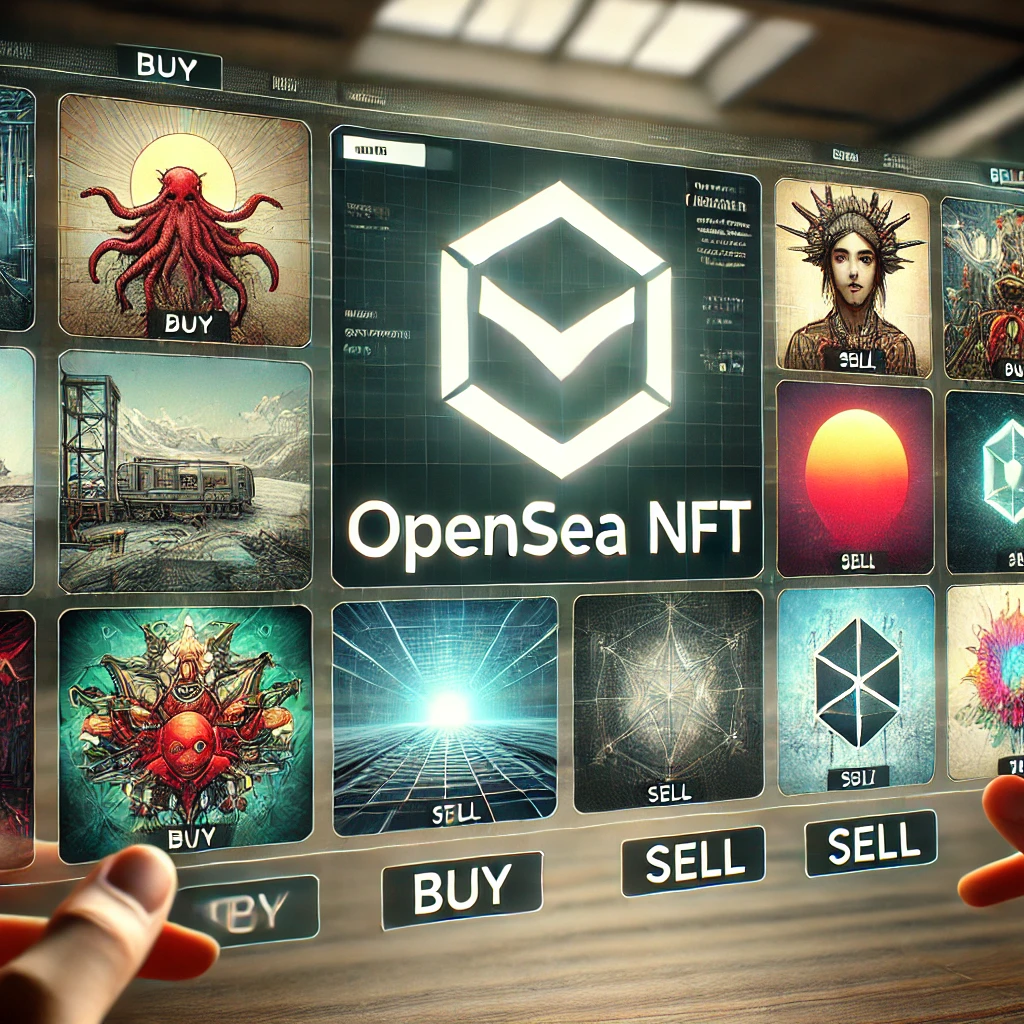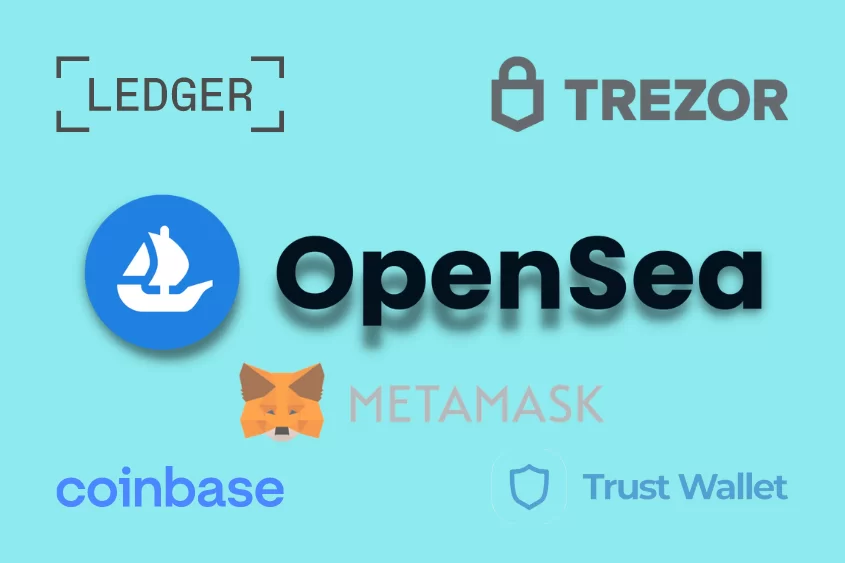Physical Address
304 North Cardinal St.
Dorchester Center, MA 02124

Table of Contents:
The name “OpenSea” undoubtedly comes to mind when you first hear about NFTs, and for good reason! The largest NFT market in the world, OpenSea allows anybody to create, purchase, and sell non-fungible tokens. If you’ve ever been curious about what OpenSea is, how it works, or if it’s the right platform for you, you are at the right place. In this blog, we will have a solid understanding of OpenSea NFT and how to make the most of it. So, let’s dive in!
OpenSea is a massive marketplace where you can purchase, sell, and even build NFTs. Think of it as the Amazon of the NFT world. OpenSea offers the resources and infrastructure to participate in the NFT ecosystem, whether you’re a creator, a collector, or just an interested bystander. It’s similar to entering a sizable gallery, except everything is digital and entirely one hundred percent unique.
Now let’s examine how OpenSea functions; it’s actually not as complicated as it might sound.
There are two options available to you: peruse the millions of NFTs in the current marketplace or start from the beginning and make your own. This covers everything, from virtual real estate to digital music and art.
You’ll need a cryptocurrency wallet in order to begin trading or producing NFTs. Consider it to be your online bank account. Though OpenSea supports a number of them, including Coinbase Wallet and Trust Wallet, MetaMask is the most widely used. As soon as your wallet is connected, you can begin using the platform.
Purchasing or selling only requires a click button. You look through NFTs, see how much they’re normally asking for Ethereum, then either make a deal or pay the asking price. Depending on their plan, sellers can either establish a fixed price or put their NFTs up for auction.
Oh yes, the infamous gas fees! Every time you make a transaction on the Ethereum blockchain, you’ll be paying a fee, often called “gas.”
Let’s get into some practical tips, shall we? Whether you’re looking to buy your first NFT or trying to sell one for a profit, these tricks will help you navigate the marketplace more effectively.

Source: nftpay.xyz
Learn more about the project before investing your hard-earned Ethereum in it. Examine the creator, the exclusivity, and the surrounding community. The NFT’s worth may rise over time if the project is well-known.
You should look over the history of transactions for each NFT. The NFT’s value may be more volatile if it has been resold several times.
When you’re enthusiastic about a project, it’s simple to get carried away by the excitement and overpay. Determine how much you can afford to spend in advance.

Uploading a file isn’t enough if you’re selling. You should write an intriguing narrative that will draw in potential customers. What distinguishes your NFT? What inspired the creation of it? These specifics are important.
If you’re just getting started, don’t overcharge for your NFT. In the event that demand increases later, you may always raise the price.
When it comes to promoting NFT, social media is your best buddy. There are active NFT communities on platforms like Discord and Twitter, which may stimulate interest.

Make sure your NFT is made using high-quality media, whether it be a picture, video, or song. Collectors are interested in resolution, sound quality, and presentation overall.
The Crucial Metadata Make sure your NFT’s metadata is filled out correctly. Add tags, a detailed description, and even stuff that may be unlocked, such as high-resolution files or exclusive bonuses only available to buyers.
Don’t sit back when your NFT goes live. Talk to prospective customers, respond to their inquiries, and create a community around your business.
The NFT world is exciting but can also be risky. Scams, hacks, and phishing attempts are not uncommon, so here’s how you can protect yourself:
This is the master key to your money. Anyone who finds out about this can seize control of your money.
Make sure that both your OpenSea account and wallet have 2FA enabled. This enhances security on top of it.
Scammers sometimes create fake sites that look like OpenSea. Double-check URLs before entering any sensitive information.
Scammers frequently send direct messages purporting to have bargains or requesting your wallet information. Disregard these.
If you possess precious NFTs, you should think about keeping them in a hardware wallet, also known as a cold wallet.

Source: 36crypto.com
Let’s talk money. OpenSea’s fee structure is pretty simple, but knowing it ahead of time will help you avoid surprises:
Platform Fee: OpenSea takes a 2.5% cut on every sale. So if you sell an NFT for $100, you’ll receive $97.50.
Creator Royalties: Some creators set a royalty fee on their NFTs, meaning that every time the NFT is resold, they receive a percentage (typically 5-10%).

Source: cyberscrilla.com
You’ve bought your NFTs, now what? How do you make sure they’re stored safely?
Ledger, Coinbase Wallet, and MetaMask are all trustworthy wallets. Verify that the wallet you’re using has a solid security record and positive user ratings.
Beyond just enabling 2FA, don’t store your private keys in easily accessible places. Consider writing them down and storing them offline.
Cold storage, which is effectively keeping your NFTs offline in a hardware wallet, is something to think about for high-value NFTs. Hackers will find it far more difficult to assess your valuables as a result.
No platform is perfect, right? Here’s a breakdown of OpenSea’s strengths and weaknesses to help you decide if it’s the best choice for you.
OpenSea offers a selection that is difficult to match, with millions of NFTs.
Even for new users, OpenSea is designed to be simple to use.
This feature allows you to link several kinds of wallets, giving it flexibility for various users.
Encourages Numerous NFT Categories Everything from virtual land to music to art, you may discover all kinds of NFT here.
OpenSea is built on the Ethereum blockchain, which is notorious for its sometimes-exorbitant gas fees.
Scams can occur in any open marketplace, including OpenSea. You must continue to exercise caution.
Although OpenSea operates in the decentralized world of blockchain, the platform itself is centralized, meaning it could theoretically be censored or shut down.
Now, this is where things get exciting! OpenSea is continuing to grow rapidly, but what does the future hold?
OpenSea has already included Solana and Polygon, which lowers the cost of Ethereum’s gas. In the future, we expect to see more blockchain integrations. OpenSea is always enhancing its search functions and user experience to make it simpler for consumers to locate NFTs they’ll like. It has been striving to provide creators access to more resources, such as more straightforward methods of managing royalties and promoting their work. More rules are likely to be implemented as the NFT industry develops. Platforms like OpenSea could gain stability and confidence as a result.
So there you have it, a complete guide to OpenSea and how to navigate the world’s largest NFT marketplace. Whether you’re buying, selling, or creating, OpenSea offers a comprehensive and user-friendly platform. However, like any marketplace, it has its pros and cons. High gas fees, potential security risks, and the possibility of scams are worth keeping in mind. Still, if you’re careful and smart about how you engage, OpenSea can be a game-changer in your NFT journey.
But what about you? Have you used OpenSea before, or are you planning to? What’s been your experience, or what are your thoughts on the future of the platform? Let me know in the comments below! I’m curious to hear your take on the world of OpenSea NFTs. And for more updates on the latest in the world of digital art, blockchain, and NFTs, be sure to subscribe to our newsletter, Web3 O’clock. Stay ahead of the curve!